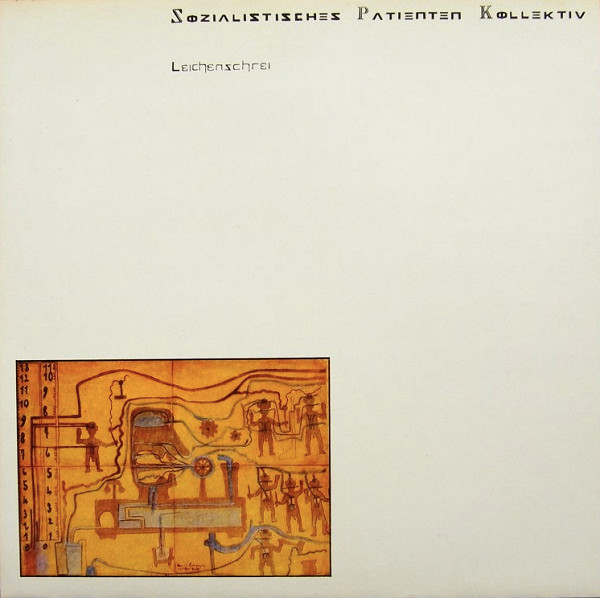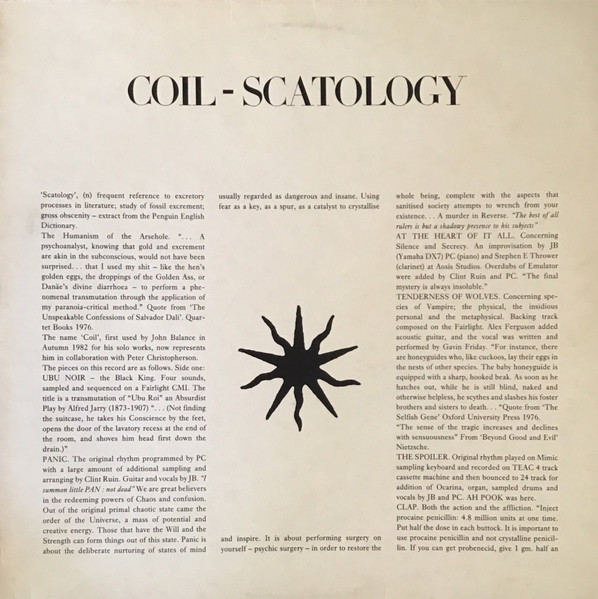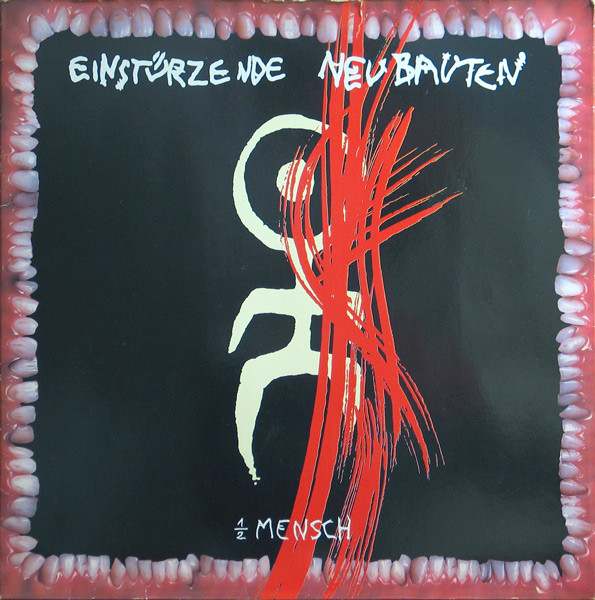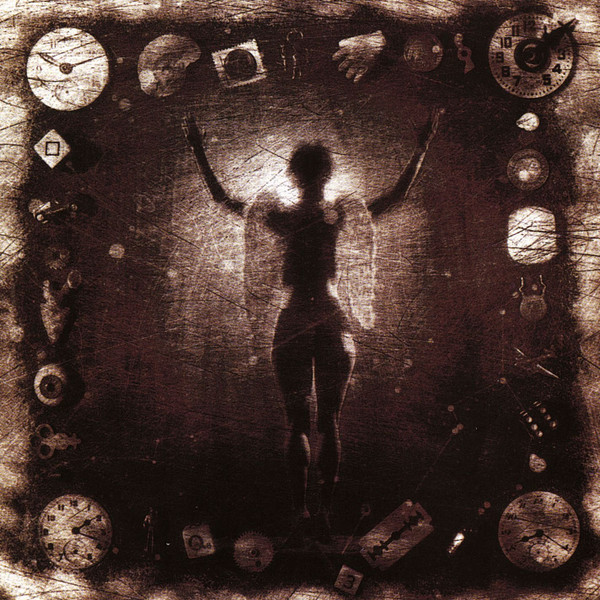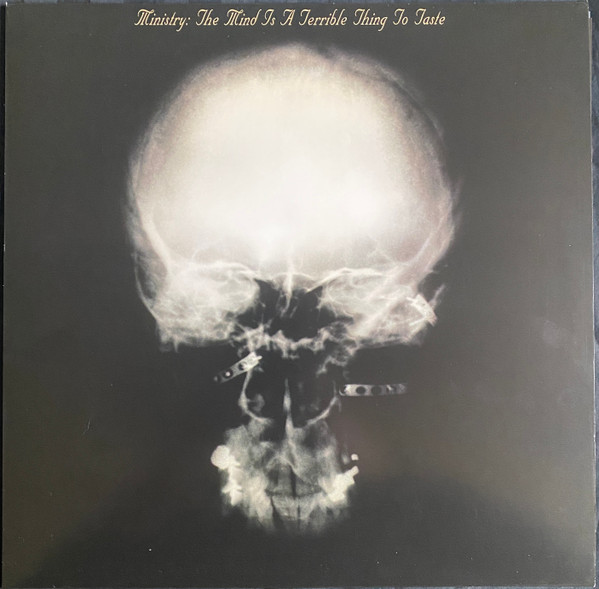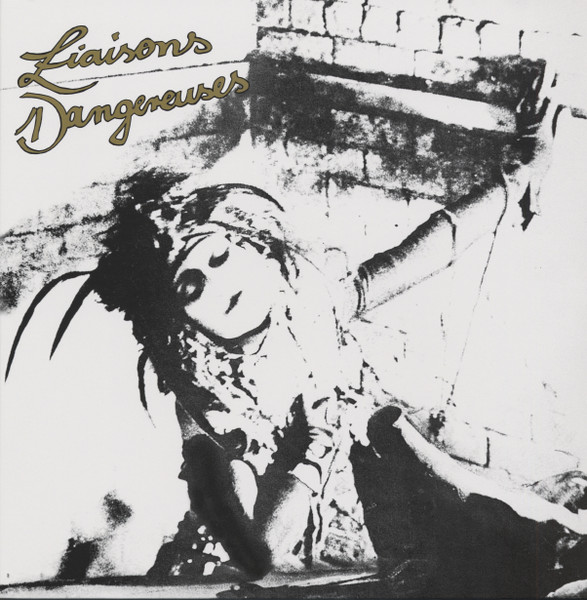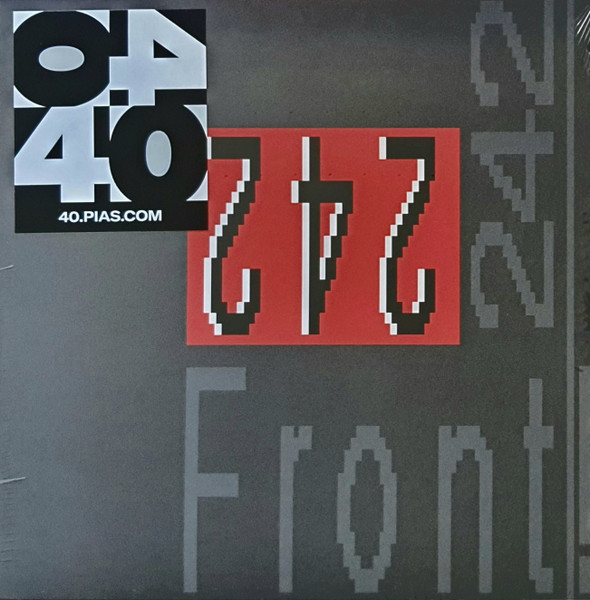The Essential Industrial Records: 1979-1993
A deep dive into the groundbreaking albums that shaped industrial music’s defining era.
When Throbbing Gristle’s Genesis P.Orridge was asked in an interview in 2012 (reprinted in Discipline magazine in 2022) about the origins of industrial music, they recalled kicking around ideas in 1975 with US artist and musician, Monte Cazazza. P.Orridge and their London-based collaborators came up with a concept in which they would produce music with the regularity and efficiency of a manufacturer. Initially, they struggled to find a name for their process, having dismissed “factory music” as too obvious. Cazazza then pointed out how often P.Orridge used the word “industrial” in conversation, and the name for the new, revolutionary genre was confirmed.
Listening to industrial music, it’s natural to assume the name came via its use of jackhammer percussion, militancy, and coldly brutal expressionism. Yet, while the truth is more prosaic, these thoughts are just as valid. In the 2015 documentary, Industrial Soundtrack For The Urban Decay, P.Orridge reflected on how early ‘80s industrial music had quickly moved on from its original definition to become a vehicle for expression; something Paul Jamrozy from British industrial act Test Dept. called a “transgressive noise aesthetic.”
This transgression manifested in various forms, ranging from angry political statements to explorations of ritualism, propaganda, social taboos, and the DIY aesthetic. The Musicians were often self-taught, actualizing their ideas by cutting up the audio tape, slashing angle grinders along scrap metal, and building analog synthesizer systems to conjure alien noise.
There was beauty in all this brutality, however. Also speaking in the Industrial Soundtrack movie, SPK founding member, Graeme Revell, noted how – thanks to industrial music – noise elements became part of popular culture, adding “…it can be dark, it can be violent but still beautiful at the same time.”
Industrial music splintered from its core over the years, and the albums featured here look at the genre’s development from 1979 into the 1990s.
Throbbing Gristle
20 Jazz Funk Greats (1979)
P.Orridge and fellow performance artist Cosey Fanni Tutti had been collaborating since the early 1970s. After their COUM Transmissions experimental arts collective ended in 1976, the two formed a band to convey industrial music ideals. The agitprop ideology was there, but they needed more co-conspirators. Chris Carter and Peter “Sleazy” Christopherson had been hanging out with the pair, and both were experimenting with sound-based technology. The two joined the group, and Throbbing Gristle was born.
Released in 1979, 20 Jazz Funk Greats was T.G.’s third album on their Industrial Records imprint. The set remains a benchmark for intelligent industrial music. Don’t let the name fool you; here was music for outsiders, the disenfranchised, and those who saw through consumerism and the manufacturing of choice. Much has been written about this iconic album, with Drew Daniel’s (of Matmos) book for the 33 1/3 series the most definitive text. Various versions of 20 Jazz Funk Greats exist, including the 2011 CD reissue that comes with a bonus disc of live performances, including two versions of the standalone track “Discipline.” Recorded in 1981, T.G.’s live takes on “Discipline” embody the band’s ability to reimagine the gig experience, with their explosive visuals and ear-splitting volume impacting future noise-makers like Laibach, Die Krupps, and Clock DVA.
Cabaret Voltaire
Red Mecca (1981)
Famous for its steel-making factories and forges, it was inevitable that Sheffield would influence the growth of the industrial music scene in the late 1970s. Founded in the city in 1973 by Chris Watson, Stephen Mallinder, and Richard H. Kirk, Cabaret Voltaire had already amassed a catalog of self-produced sonic experiments by the end of the decade. These early tests were released by Industrial Records in 1980 as a cassette under the title 1974-1976, and the collection illustrated the band’s fascination with the urban ruination that industrialization brings.
Then, in 1981 on Rough Trade Records, Red Mecca showed how the trio was wading deeper into the electronic side of the industrial sound to build driving, quasi-funky grooves. Thematically, the album tackles British social unrest and views on religious extremism stirred by the televangelists the band had seen during a visit to the US. Red Mecca’s tooth-and-nail, beat led had a rousing effect on Canada’s Skinny Puppy, UK’s Nitzer Ebb, Belgium’s Front 242, and others, with the band’s electrifying live sets sealing the industrial deal.
Z’EV
Production And Decay Of Spatial Relations (1981)
While British artists formulated their industrial sound, San Francisco-based artist Z’EV developed a more percussive take. Born Stefan Joel Weisser, Production And Decay Of Spatial Relations is Z’EV’s first album. Crystallizing his aim to make thunderous, instrumental music, the 1981 record examined themes of occult and religion as Z’EV pounded and scraped on manufactured materials like alloy pipes, corrugated iron sheets, and discarded scrap.
Weisser’s studies led to an interest in how drumming can induce trances and feelings of otherness in international faiths, and Production And Decay documented his findings. Unlike Cabaret Voltaire, though, Z’EV’s beat loops were not concerned with timekeeping. On the “Zuid/Zuid Oust,” his rhythms fall in and out of time, like a series of clattering passing trains. And “Vuur Uur 1e” possessed the circular drones that Test Dept. and Germany’s Einstürzende Neubauten in Germany employed at the time.
SPK
Leichenschrei (1982)
Like Throbbing Gristle, Australian noise collective SPK created a world with industrial music at its center. Founded in Australia in 1978 by New Zealand-born Graeme Revell and a revolving group of collaborators, SPK band members created their own characters to inhabit a regime dominated by an obsession with physical and mental illnesses and the treatments thereof.
Released in 1982 on the band’s Side Effects label, Leichenschrei is SPK’s second album, and the German title, Leichenschrei, fittingly translates to corpse scream or death rattle, an indicator of the group’s fascination with corporeal existence and the sound within. This is a willfully disturbing record, peppered with spoken word recordings of autopsy verdicts, texts on mental health conditions, keening noises, and ominous, funereal beats.
Swans
Filth / Cop (1983/84)
Founded by constant mainstay and vocalist Michael Gira in New York City in 1981, Swans’ key focus was (and remains) volume. Volume in sound levels, volume in thematic lyrical intensity, and volume in stretching human resilience until it starts to snap. Naturally, these commitments fit with industrial music’s tenets, and Swans’ early years centered around making unrelenting music.
The albums Filth (their debut from 1983) and Cop (released one year later) saw the band commit to their patent, slow-mo, repetitive style, wherein slabs of noise collide over time to reach a cacophonous racket. Gira’s lyrics stemmed from observations of urban dissolution and, as with Cabaret Voltaire and their reflections on Sheffield’s industrialized deconstruction, his experience of New York City’s dereliction. The incorporation of industrial music into the Filth and Cop album’s production values – whether purposeful or incidental – showed how the genre could activate new routes into noise as an art form.
Coil
Scatology (1984)
By 1981, Throbbing Gristle disbanded, and Genesis P.Orridge formed Psychic TV as a new outlet. After contributing to Psychic TV’s output for a year, Peter Christopherson left to pursue other interests and, in 1982, teamed up with John Balance (also a Psychic TV member) to form Coil. Balance was already heavily involved in industrial music, having produced fanzines and compilation albums celebrating the genre. Plus, his background as a poet meant Balance could provide lyrics and vocals.
Released in 1984 on Some Bizarre’s offshoot, Force & Form, Scatology worked around themes of alchemy and societal transgression. Musically, it had one foot in the original forms of industrial music and the other in the intricate, textural electronica that Coil would become known for. Coil’s knowingly painful take on soul classic “Tainted Love” – the album’s final track – was released as a double A-side single, with proceeds going to British AIDS charity, the Terence Higgins Trust. Additional production on the set came from fellow industrial counter-culturist J.G. Thirlwell (as Clint Ruin), while Virgin Prunes singer Gavin Friday took lead vocals on the “Tenderness of Wolves” track, and Marc Almond (by then a Some Bizarre stablemate) played guitar on “Restless Day.”
Einstürzende Neubauten
½ Mensch (1985)
The third album from Berlin’s Einstürzende Neubauten, 1985’s ½ Mensch (sometimes named Halber Mensch), saw the band build on their sparse, clattering sound by welding it to contemporary developments in synthesized electronica. The band led from the front in Germany’s industrial music scene, and their name (which translates as “collapsing new buildings”) embodied the attitudes towards urban industrialization addressed by Throbbing Gristle, Test Dept., and others. And, as with Z’EV, Neubauten’s starting point centered around reclaiming disused metal objects and converting them into instruments of percussion.
Furthermore, by 1985, their penchant for using heavy-duty construction tools – drills, cement mixers, and sledgehammers – during their live appearances cemented their status as unpredictable performers. With frontman and group founder Blixa Bargeld continuing to cast himself as a restless, frustrated narrator of disarray, ½ Mensch shepherded the visceral anger of the band’s live personality with their knack for evoking stark atmospheres.
Foetus
Nail (1985)
J.G. Thirlwell’s showmanship on Nail – his fourth album as Foetus – expanded on what it meant to make industrial music. Released in 1985, the record’s “Enter the Exterminator” composition is a caustic arrangement of whispers and crashes, and DI-1-9026 manages to be both funky and frightening, like a hoedown full of zombies. Elsewhere, at just over a minute long, “Private War” might be the ultimate ambient industrial music composition, as metal slowly grinds against metal for a fiery exercise in dissonance.
Produced by Thirlwell and based on observations of greed, control, and lust, Nail is a wondrous industrial showstopper. Along with his Coil production work, by the time Nail dropped, Thirlwell had already worked with Steven Stapleton (aka Nurse With Wound), Nick Cave & the Bad Seeds, and others, as well as continuing to make music as Wiseblood, Clint Ruin, Xordox, Steroid Maximus, Frank Want, and more.
Nine Inch Nails
Pretty Hate Machine (1989)
By the late 1980s, the fingers of industrial music were beginning to pry their way into other genres. Here was a style and sound that had taken on a timeless quality — it resonated with those who felt betrayed by the consumerist conservatism of the modern world. Trent Reznor had bounced between various keyboard pop bands before deciding to go it alone. Identifying with the themes industrial music encapsulated, he began testing the limits of electronic sound under the Nine Inch Nails pseudonym.
Reznor’s day job as a recording studio apprentice engineer in Ohio meant he had access to the latest synthesizer technology, and his Nine Inch Nails debut, Pretty Hate Machine, is the sound of one man determined to make his mark on the industrial landscape with all the newest machines. While purists might wrinkle their noses at Reznor’s tech-dependant, hook-filled take on the industrial way of doing things, the future success of Nine Inch Nails acted as a gateway for fans who wished to learn about the forebears who had driven Reznor forward in the first place.
Ministry
ΚΕΦΑΛΗΞΘ (1992)
By 1992, Al Jourgensen’s Ministry had moved from producing club-friendly tracks to some of the most punishing music of the early 1990s. Industrial music and heavy metal were suitable partners, and Jourgensen’s band took a lead role in closing the gap between them. Both Ministry’s previous albums basked in belligerence and existentialism, and ΚΕΦΑΛΗΞΘ (also known as Psalm 69) cemented their commitment to the industrial sound. ΚΕΦΑΛΗΞΘ was a fast, loud, and pugnacious onslaught, with Jourgensen barking out his lyrics like a demonic cattle auctioneer.
The record arrived at a time of increased productivity in the industrial scene. Other bands were making equally important work, and 1993’s Hot Wired Monstertrux collection offers a strong snapshot of the movement. Additionally, the four-CD compilation, There Is No Time, digs deeper into the American side of things.
Prong
Cleansing (1993)
Having previously straddled the line between hardcore punk and harsh metal, when the time came for Prong to record their fourth album, they plugged into the industrial concept. The line-up for 1993’s Cleansing remained firmly traditional – guitars, drums, and vocals – but the industrial themes adopted for the set included droning keyboards and tape loops of chanting crowds, grinding machinery, and ranting political speeches. Further industrial firepower came from the inclusion of the late Paul Raven of Killing Joke on bass and occasional Swans member Ted Parsons battering the drum kit. The star of the Cleansing show, though, was constant Prong progenitor and vocalist Tommy Victor.
At the time, vocalists in industrial music aimed for anger rather than sticking to a melodic structure. And, on Cleansing, Victor drops effortlessly into that space, adopting the role of a vengeful, righteous poet as he punches his words through the sound bed. In all, Cleansing functions as another example of how industrial music had come to inspire diversification across the alternative music spectrum.
More essential INdustrial records
-
-
The Downward SpiralNine Inch Nails2024Industrial Metal, Alternative Rock, Experimental2 x Vinyl, Album, Numbered, Reissue
-
-
Liaisons DangereusesLiaisons Dangereuses2015Industrial, ExperimentalVinyl, Album, Reissue, Remastered
-
-
-
-
-
-
KEEP DIGGING
Don’t miss a beat
Subscribe to Discogs’ email list to learn about sales, discover music, record collecting guides, product tips, limited edition offers, and more.




